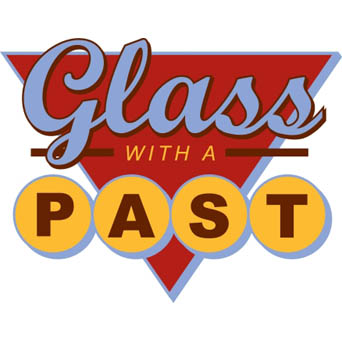Unsurprisingly, I get a lot of textured glass donated to the cause. It is pretty special, so people are more inclined to hang onto it until they find a home for it.
The bad news is, it’s usually a pretty small piece so there isn’t a lot of room for error.
There are two things that you can do with textured glass, slump it and maintain the texture as a design element, or fuse it, knowing that the texture will disappear, but some other thing will happen as a result.
Using textured glass for slumping:
1. Plan to grind/prep the edges before slumping, we won’t be hitting a high enough temperature to round the edges with heat.
2. Assume that you’ll probably lose any sandblasted areas. These areas typically fire polish and become clear. For example:
becomes this:
3. careful on your top temperature. To slump textured glass and keep the texture, I use a top temperature of 1385 degrees in the side fire kiln and 1355 in the top fire kiln. I don’t crash cool, I just stop heating at the top temp. and let the kiln cool to annealing temperature and resume the firing schedule.
Using the texture as a design element in fusing:
Sometimes, the texture on glass is just not all that exciting. I got a large sheet of obscure bathroom glass, that was just a fine texture, very common and nothing to write home about.
I incorporated the texture into my final fusing project by cutting two pieces the same size (remember that glass is always self compatible) from the same sheet and stacking them together, texture side in. After adding some design elements of grass, I fused the whole thing.
The texture captured thousands of tiny bubbles into the layers of glass. This piece garnered many positive comments.
Here are some other textured glass projects to inspire you, all of them slumped:
Textured glass is also terrific for painting with Mica to give it a pearlescent or metallic sheen:
Other Articles you may enjoy:
Adding Texture and Pattern to Window Glass

Please Pin Me! 










